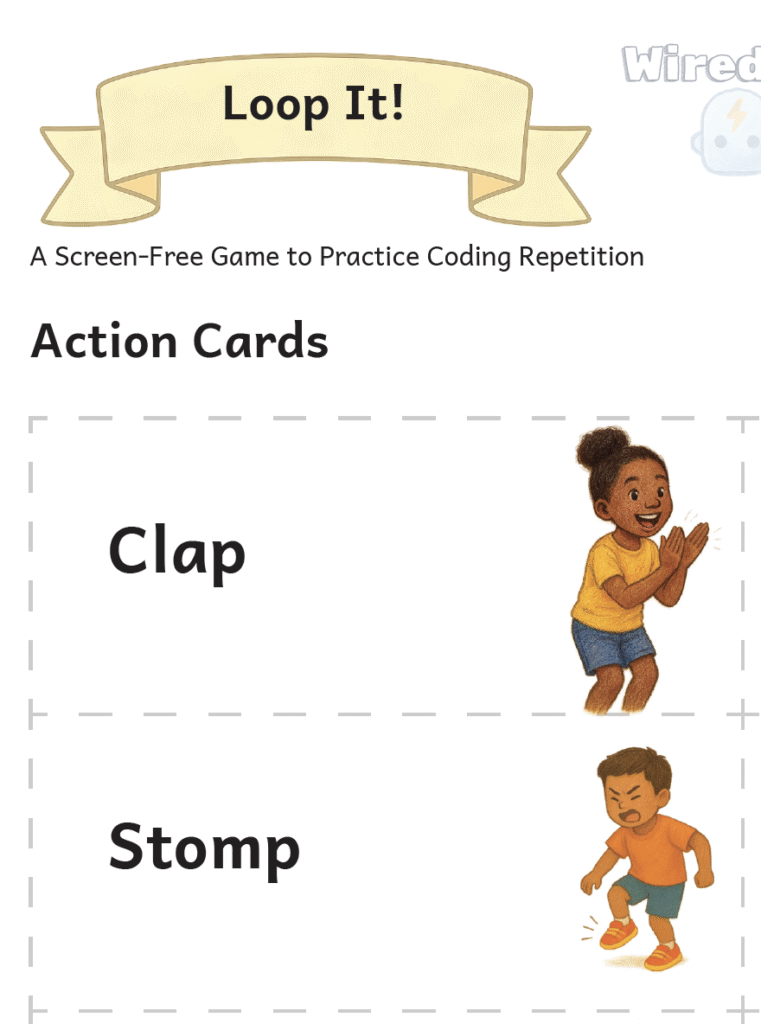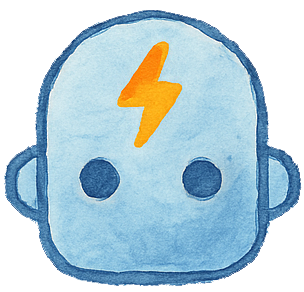Coding Loops for Kids is a fun and essential topic in early programming education. A loop is a way to repeat a set of instructions, helping kids understand how computers follow commands efficiently without writing the same step over and over. This is one of the most useful tools in coding because it saves time, reduces mistakes, and makes programs easier to manage.
For children in kindergarten through fifth grade, loops can be introduced without any screens or software. The concept is simple: repeat a task. The goal is to help students understand how repetition works in a logical sequence.
What Is a Loop?
A loop is a structure that repeats a block of code.
For example:
for i in range(3):
print("Jump")
This code tells the computer to print “Jump” three times. Instead of writing three separate commands, the loop handles the repetition.
This same idea works in everyday life. If you say “clap three times,” you are using a loop. You gave one instruction with a set number of repetitions.
Why Loops Matter
Loops appear in nearly every program or system. They are used to:
- Process data one item at a time
- Animate characters in games
- Control robots and sensors
- Check for conditions until something changes
Without loops, programmers would need to write the same code again and again. Loops improve efficiency and keep code organized.
For young learners, loops build critical thinking. They help students recognize patterns, reduce unnecessary steps, and begin to think like programmers.
How to Teach Coding Loops for Kids Without Screens
You do not need a computer to teach this concept. Loops can be modeled through movement, drawing, and physical tasks. Here are a few ways to show how loops work.
1. Action Repeats
Say a simple command like “jump” or “clap.” Ask the student to repeat it five times. Then ask how they could say that with fewer words. Guide them to say “jump five times.” This shows the idea of compressing repeated instructions into one loop.
2. Drawing Patterns
Provide basic commands such as:
- Move forward
- Turn right
Ask students to repeat the commands four times and watch what shape they draw. The result is usually a square. This activity mirrors how loops are used in visual programming and graphics.
3. Build and Repeat
Give a small pattern using colored blocks, such as red-blue-yellow. Ask students to repeat the pattern three or four times in a row. This creates a loop they can build and touch.
4. Roll and Repeat Game
Create one die with actions (hop, spin, stomp) and another with numbers. Roll both. Then act out the action the number of times shown. This introduces the idea of variable-controlled loops.
5. Robot Movement
Set up a path using tape or paper. Provide a short instruction, such as “step forward, turn left.” Then ask students to repeat that set of steps three times. This shows how robots follow loops to move in specific patterns.
Core Concepts Behind the Activities
Each activity introduces key ideas behind loops:
- Repetition: A task can happen multiple times without writing it out each time.
- Efficiency: One set of instructions can be reused.
- Control: You decide how many times a task repeats.
- Order: Loops must follow a sequence to produce the right result.
These are the same ideas used in real-world programming. Whether writing scripts, building games, or automating tasks, developers rely on loops to control behavior and structure logic.
Free Printable Coding Loops for Kids to Try

Loops are more than a programming shortcut. They are a way of thinking. By exploring repetition in everyday tasks, students start to see how coding works before ever touching a keyboard.
For a simple starting point, download our free printable Loop Game, part of our screen-free coding curriculum designed for K through 5 learners. It includes step-by-step activities and loop challenges you can try at home or in the classroom.
Learn More: What Is a Loop in Programming?
Looking for another fun explanation of loops? Scratch Garden’s guide to learning about loops introduces the concept in a playful and visual way. It explains how coding loops for kids work in kid-friendly terms and shows how repeating instructions can make programs more efficient, using humor and creativity to keep things engaging.


Leave a Reply